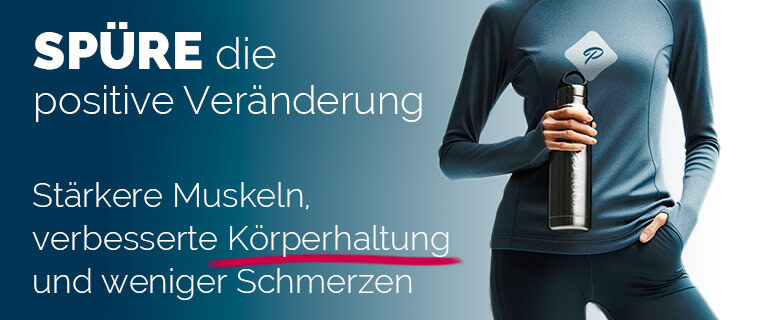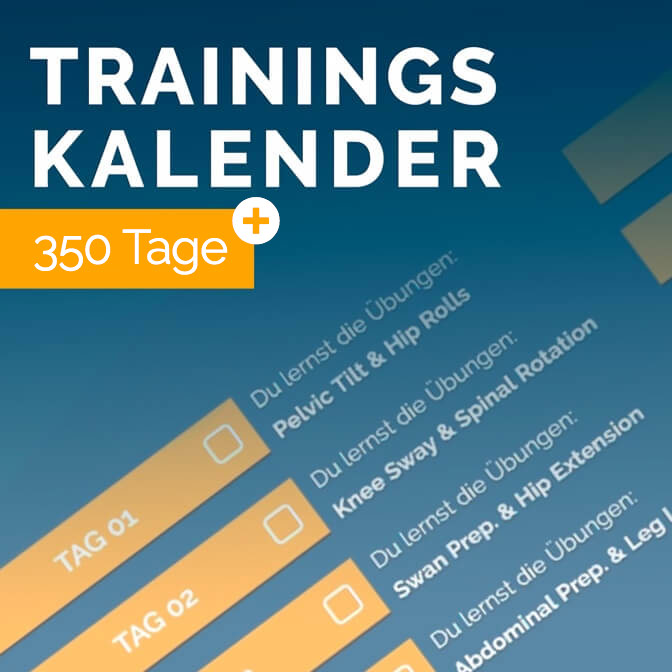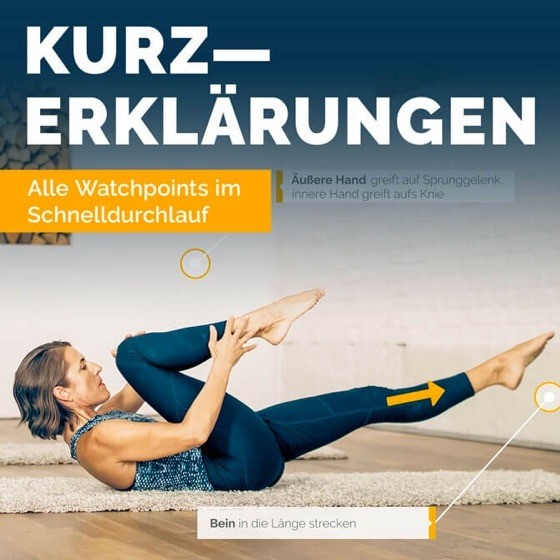
Pilates exercises explained
Breathing
Breathing prepares you for the following Pilates exercises and focuses your mind. To fully develop the effectiveness of the exercises, the exercises are combined with 3-dimensional chest breathing.
This breathing technique teaches us to maintain a certain basic tension in the deep abdominal muscles even during inhalation, straightens the upper body and thus also brings movement to the thoracic spine. It establishes the connection between the diaphragm and the pelvic floor and supports the activation of the deep abdominal and back muscles.
Exercise description
Attention is drawn to the chest. This is done with the inhalation, which is done through the nose, in all directions, ie. 3-dimensional extended.
Pictorially, breathing flows laterally into the flanks, backward into the rib cage, into the lower rib arches, and forward into the chest. With exhalation, the entire rib cage sinks back together.
Exhalation is supported, among other things, by the transversus abdominis - the deep transverse abdominal muscle. This pulls the abdominal wall toward the spine during exhalation.
Ideally, every movement is based on the rhythm of breathing.
Frequently asked questions
What if I can approach better with inhalation?
It is well known that there are different types of breath. If someone finds it easier to approach with the inhalation and easier to let go with the exhalation, we recommend sticking with it.
Are all other breathing techniques wrong?
In no case. You just have to know when to use which breathing technique.
What to do in case of severe cold?
Continue to try to breathe in through the nose. Most often, this clears the nose.

Pro Tip From Maria
If you look at the beginning of the Pilates trainings If you take a few minutes for this conscious breathing, the autonomic nervous system is positively stimulated - you are more present.
Regular practice makes it increasingly easier to get into the flow of movement of the individual exercises. The control is automatic and is transferred to everyday life.
Video with the brief explanation of the Pilates exerciseBreathing
Most common errors
Lip brake is used too forcefully, so that the neck, jaw and throat muscles tense up.
Hamster cheeks.
Exhalation occurs in a jerky manner, which means that too much air is squeezed out at the beginning. This puts us into a kind of shortness of breath.
Assistance
What can you do if the exercise is too difficult?
Learning 3-dimensional breathing by breathing differentially into the 3 zones and later joining them together.
We can regulate our breathing cycle by using a breathing strategy that prevents us from breathing too quickly or too superficially. This could look like this:
1. inhale naturally through nose and exhale through mouth.
2. inhalation e.g. 3 seconds, exhalation approx. 6 seconds.
3. pause briefly after inhaling and exhaling.
Breathe only into the abdomen - place your hands on the abdomen.
Breathe only into the flanks - place hands on the outside of the chest.
6. direct breathing to the back of the body - feel the back of the chest press more into the mat.
7. direct breathing to the front chest - place hands on the rib cage.
8. if all the zones can be controlled through breathing, you can then combine them into the 3-dimensional breathing.
Training support
How can you support the training success?
Regularly take a few minutes and consciously perform 3-dimensional breathing.









